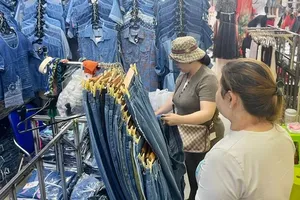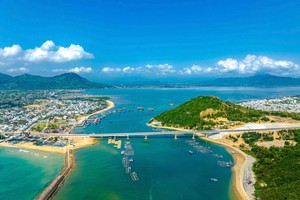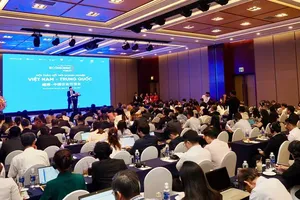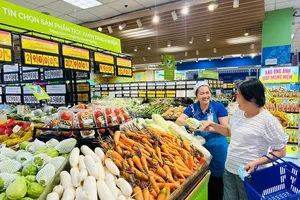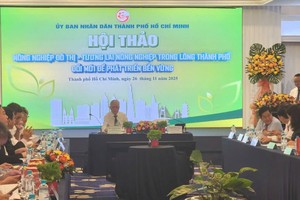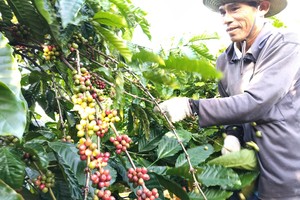Just a year ago, durian was a highly sought-after fruit, with each hectare generating billions of Vietnamese dong in revenue. Today, however, durian growers are facing growing concerns over the risk of crop failure—an unexpected turn few could have anticipated.

Durian sold on streets in Mekong Delta region
Since early May, durian prices have plummeted. In the Mekong Delta region, the current price for Ri 6 durian at orchards is between VND42,000 and VND45,000 per kilogram. A kilogram of grade 1 Monthong durian is priced at VND70,000 while the grade 2 kind is approximately VND50,000 per kilogram. As durian enters its peak season, growers are facing challenges in selling their produce due to fluctuating prices, which raises concerns about potential losses. Additionally, excessively high prices may deter buyers.
Meanwhile, along both sides of the National Highway 61C in Chau Thanh A District of Hau Giang Province, the National Highway 57 through Long Ho District of Vinh Long Province and Cho Lach District of Ben Tre Province, the National Highway 1A through Cai Be District and Cai Lay Town in Cai Lay District of Tien Giang Province, many gardeners are selling durian at cheap prices, only from VND25,000 (US$0.96) -VND30,000 a kg.
Explaining the disparity between roadside and farmgate durian prices, Ms. Le Thi Tuyen, a resident of Cai Lay Town in Tien Giang Province, shared that although it is harvest season, buyers have become extremely selective, rejecting a large portion of the fruit. As a result, her family has resorted to selling durians at very low prices along the roadside to avoid losses.
Farmer Nguyen Ngoc Thuy in Chau Thanh A District of Hau Giang Province is facing a similar challenge. Rather than waiting for buyers, she and her family now sell their durians directly to consumers and promote them through community associations and social media groups.
Farmer Chin Tuoi from My Loi A Commune in Cai Be District of Tien Giang Province, expressed frustration. For many years, her durians were purchased by exporters at stable prices. However, more recently, these enterprises have introduced stricter requirements, including mandatory testing for cadmium residues—only fruit that passes the test is eligible for purchase at high rates.
Businesses concerned about quality inspection issues
For many years, China has been the main market for Vietnamese durian. Since the two countries signed the Protocol on plant quarantine for exporting durian to China, fresh durian from Vietnam has been officially exported to this market.
However, As of 2024, China mandates that all shipments must possess Cadmium and yellow 0 test certificates for customs clearance. If any residues are found, the codes for packaging facilities and growing regions will be put on hold. Vina T&T Company, a major exporter of durian to the Chinese market, has not exported any batches of durian thus far due to quality inspection challenges.
Despite operating on a small scale, some businesses are cautiously continuing to gather durian, yet they express concerns about their ability to export. Vo Tan Minh, Deputy Director of Phuong Ngoc Company Limited in Cai Be District, Tien Giang Province, stated that the company is still sourcing durian from local gardens for export to China. However, the volume has significantly declined compared to 2024 due to the need for inspections. According to Deputy Director Minh, in order to fill a full container of approximately 20 tons of durian, the company must source from multiple gardens, each contributing a small amount, which complicates the testing process.
Moreover, testing facilities for cadmium and yellow 0 residues remain limited. Without certification confirming the absence of these substances, durian shipments are denied customs clearance. Previously, Chinese authorities inspected cadmium levels in only about 2 out of every 100 containers. Now, all containers—100 out of 100—are subject to inspection. This rigorous process takes 7 to 10 days to complete, during which time the fruit may ripen and deteriorate. As a result, shipments are often returned to Vietnam.
Several businesses have suffered losses amounting to tens of billions of Vietnamese dong after being turned away at the border despite having transported their goods for export.
In response to the current challenges, Chairman Vo Tan Loi of the Tien Giang Province Durian Association stated that as global markets—particularly China—tighten technical standards, Vietnamese durian exporters must prioritize product quality and traceability. As a result, many exporters have ceased using banned substances to artificially enhance the fruit’s appearance. However, some shipments have still tested positive for yellow 0 residue, despite claims from exporters that they no longer use such colorants.
In several cases, businesses attributed the contamination to factory tools previously exposed to yellow 0, which may have transferred residues during processing. The association has since advised exporters that have received warnings to replace certain equipment to ensure compliance and facilitate smoother export clearance.


